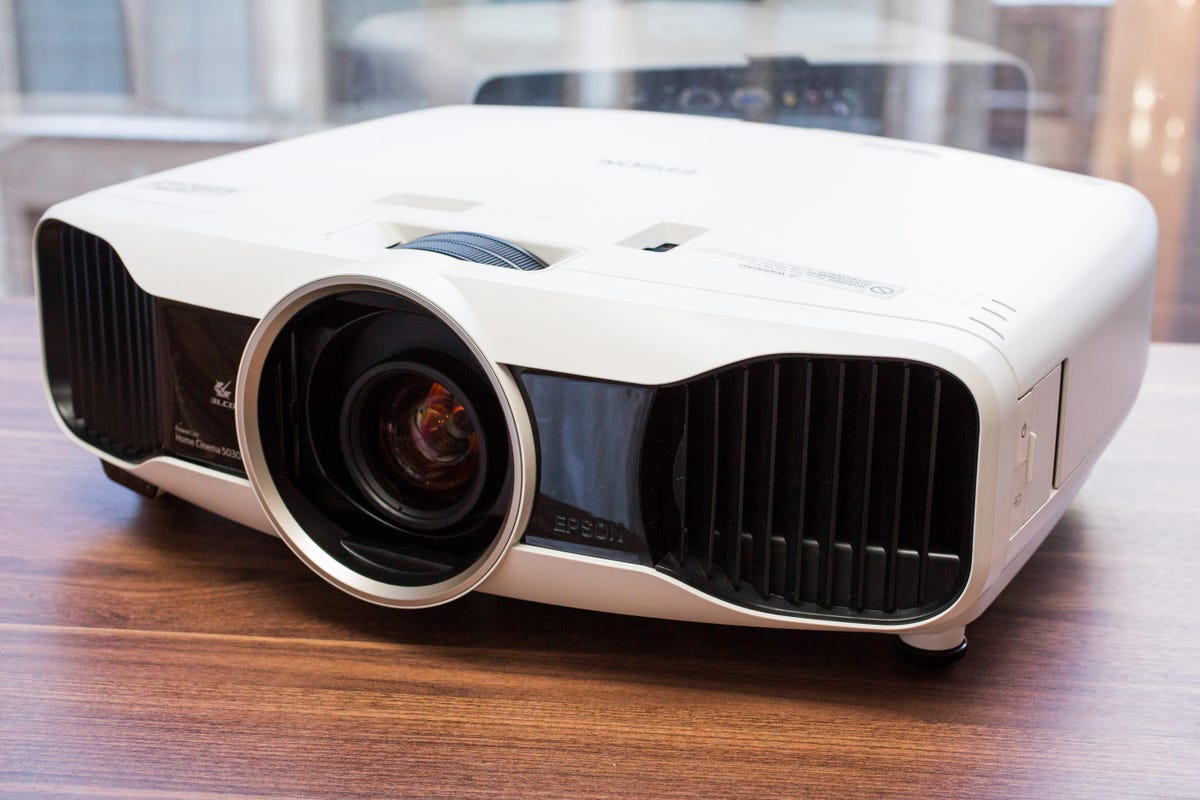
Aloysius Low/CNET
With prices falling and screen sizes increasing, large-screen TVs have become quite the affordable commodity. In Singapore, a Toshiba 58-inch LED TV can be bought for as low as S$1,649 ($1,320), about half what a freshly minted graduate makes per month in the island state. So it’s interesting to note how bullish Epson’s executives were about the home projector market in Asia for the next few years.
“There’s still potential for growth in China. Total market size in the country is expected to double every year until the year 2020,” says Kenichi Yamamoto, Epson’s general manager of its projector sales and marketing division.
And while TVs and home projectors can co-exist, Yamamoto says home projectors have a few advantages over normal TV displays.
“Normally, owners of home projectors have screen sizes of around 87 to 100 inches, and in order for TVs to catch up to the sizes that home projectors can do, it will take around five to 10 years [at equivalent prices],” Yamamoto says. “And I don’t think there is a big difference in power consumption, but from a total power consumption point of view, projectors are still lower.”


Sarah Tew/CNET
TV manufacturers have been pushing Web-connected smart TV services alongside Ultra HD offerings, but Epson isn’t looking at making its projectors smarter. The company has no plans to integrate an experience similar to smart TVs into its projectors, though Yamamoto admits it is an “interesting idea.”
With the decline in plasma television sets — arguably the stronger option for movie purists who want better contrast — home projectors look set to fill in that void here in Asia.
In Singapore, an entry-level Epson projector, the EH-TW5200, features full HD output as well as active 3D for just S$1,499 (around $1,200), making it comparable to a TV. Bear in mind though, there’s still the cost of a screen and installation on top of that.
Epson makes you feel good
- Epson PowerLite Home Cinema 5030UB review
- Hands on with Epson’s laser projectors
- Epson PowerLite 3020 review
Yamamoto expects about 10-15 percent annual growth in Asia, and this isn’t really much when you look at the numbers. Epson says it has 10,000 homes in Southeast Asia and even at the best-case scenario, that doesn’t seem sustainable on the consumer side of things. The kicker, however, is that the company expects to double the current 60,000 homes in China and South Korea every year.
“Five years ago, there was no home projector market in China. As the economic situation improves and people start thinking of how to spend their money, you’ll see a jump up in the number of purchases,” he says.
Besides the economic growth, part of the increased demand is due in part to sports. The recent World Cup in Brazil was a huge opportunity for the company’s home projectors, says Junichi Watanabe, Epson’s chief operating officer of its visual products operations division.
“The World Cup is an accelerator for increased demand,” says Watanabe.
Furthermore, he says that James Cameron’s epic 3D movie “Avatar” helped drive sales of 3D projectors, with people keen to recreate the theater experience at home, while entry-level projectors were also in demand once full-HD 1080p models became available.
Watanabe notes that the lack of good 3D content has slowed growth for both TVs and projectors, and hopes that this will change. While 4K technology appears to be next big thing Epson is looking into, the Japanese exec laments that this content isn’t widely available to drive sales.
“4K is a natural direction for projectors, alongside higher contrast products,” he says. “The right time is coming, though content for 4K is lacking.”




